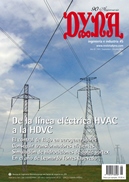STATE OF THE ART OF ACTIVE AND PASSIVE FLOW CONTROL DEVICES FOR WIND TURBINES
Keywords:
Aerogenerador, Control de flujo, Sistemas pasivos, Sistemas activos, Wind turbine, flow control, passive devices, active devices.Abstract
This article presents an overview about available knowledge, references and research on the active and passive flow control devices which initially were developed for aeronautic industry and are currently being investigated and introduced on wind turbines. The main goal pursued with the introduction of these devices is to delay the boundary layer separation and enhance/suppress turbulences. The aim is to achieve a lift enhancement, drag reduction or flow-induced noise reduction, among other parameters. However, achieving these goals presents some issues, because the improvement of one of these parameters may suppose an undesired effect in another. For this reason it is necessary to study in detail each one of these devices, their operating concept, applications and their main advantages and drawbacks. Depending on the flow control nature, devices can be classified as actives or passives. Passive techniques allow to improve the performance of the wind turbines without external energy expenditure whereas active techniques require external energy for their activation. There are a lot of devices. In this chapter there have been compiled some of the most important ones, both passives devices (Vortex Generators, Microtabs, Spoilers, Fences, Serrated trailing edge) and actives devices (Trailing edge flaps, Air Jet Vortex Generators, Synthetic Jets). Key Words: Wind turbine, flow control, passive devices, active devices.Downloads
Published
2016-09-01
Issue
Section
ARTICULOS

